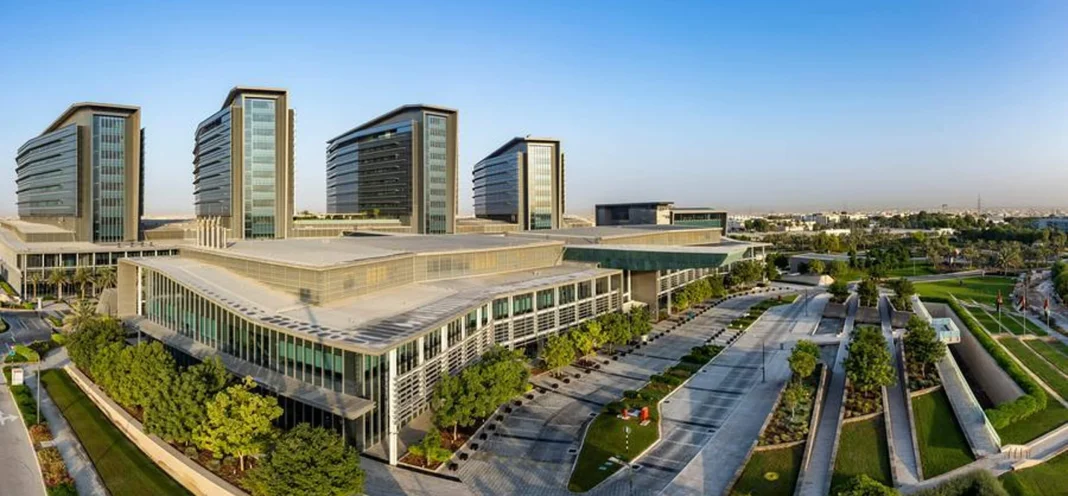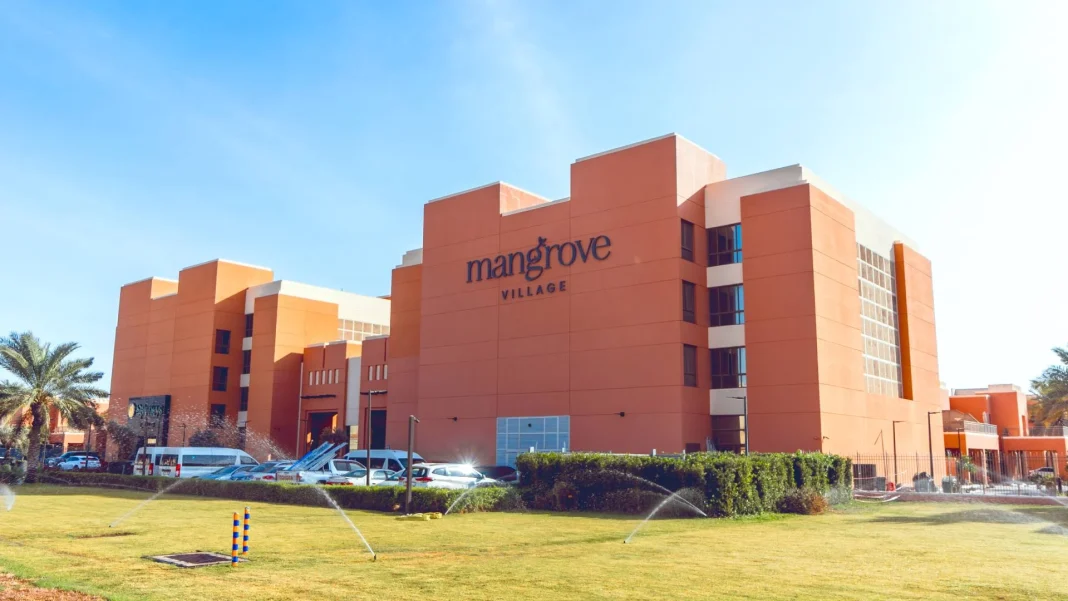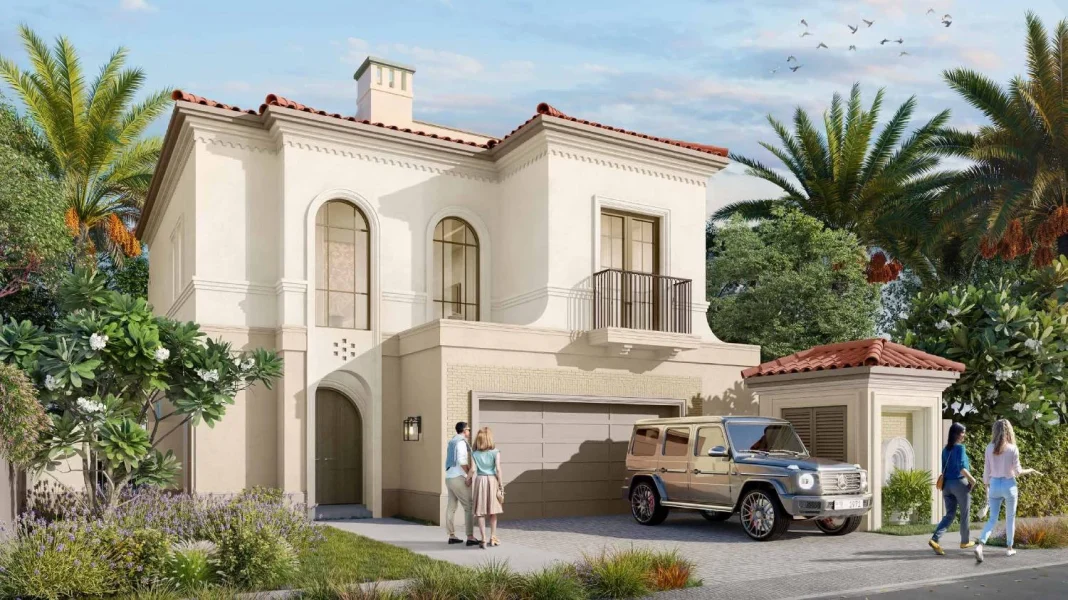Shakhbout City is quietly consolidating itself as the answer to one of the most pressing questions for Abu Dhabi families: where can you live well, with space and without mortgaging the future? Previously known as Khalifa City B, this vast residential area has left behind its label as a peripheral project to become one of the zones with the greatest projection and appeal in the emirate capital.
Far from the vertical glitter and stratospheric prices of the islands, it offers a value proposition anchored in reality, a real alternative for families seeking something that the center can no longer offer at a reasonable price: living space, gardens and a sense of community that is often lost among skyscrapers.
The narrative of this area is one of gradual but unstoppable transformation. What a decade ago was seen as a future bet, a spot on the map on the outskirts of the main city, is today a palpable and bustling reality. The interest it awakens is no longer limited to those seeking a purely economic solution, but attracts an increasingly broad profile of professionals and expatriates who have done their calculations and understood the potential.
It is the next great frontier of family life in Abu Dhabi, an area that has gone from being a promise on a plan to a vibrant and lively reality, challenging the notion that prestige only resides in the most well-known postal codes.
THE AWAKENING OF A SLEEPING GIANT: FROM PROJECT TO FAMILY REALITY
The story of Shakhbout City is the chronicle of the planned growth of Abu Dhabi. Conceived within the emirate’s strategic vision, its development has been a key piece in the plan to decongest the urban core and offer residential solutions to a constantly growing population. Its location, although far from the first line of beach, is eminently strategic, situated on the continent and flanked by the main highways that connect Abu Dhabi with Dubai and Al Ain. This geographical position has made, what was previously perceived as the outskirts has been integrated de facto into the urban sprawl of the capital, shortening psychological distances and turning it into a nerve center for thousands of people.
The name change from Khalifa City B to Shakhbout City was not merely cosmetic; it symbolized a turning point in its development, marking its consolidation as an urban entity with its own identity. This change came accompanied by massive investment in infrastructure, from road improvements to the construction of schools, health centers and mosques. It is no longer a simple dormitory for workers, but a community that has matured, a community that has matured to become a self-sufficient city in its own right. This maturation process has been the catalyst that has attracted thousands of families in search of a stable and well-equipped environment to raise their children.
MORE METERS, LESS EUROS: THE WINNING EQUATION OF RESIDENTIAL SPACE
The main selling argument, and the one that resonates most strongly among potential residents, is the unbeatable relationship between space and price that Shakhbout City offers. In a real estate market as competitive as Abu Dhabi’s, where the square meter in ‘prime’ areas reaches astronomical figures, this area emerges as an oasis of sensibility.
Here it is possible to find spacious independent villas with four, five or even more bedrooms, with generous private gardens, for a rental or purchase cost comparable to that of a modest-sized apartment in Al Reem Island or Saadiyat. This is the fundamental value proposition, the possibility of living in an independent villa with a private garden for the same price as a two or three-bedroom apartment in the most central areas.
This greater value per square meter does not only translate into having an extra room or a garden where children can play. It is a qualitative change in lifestyle. It implies having storage spaces, an office to work from home comfortably, private garage and, ultimately, a sensation of spaciousness and relief that directly impacts family wellbeing. Shakhbout City has democratized access to a type of housing that in other parts of the city is reserved for an elite.
It is a philosophy of life, where each square meter translates into a tangible improvement in daily quality of life, from home organization to family leisure possibilities without leaving the house.
NEIGHBORHOOD LIFE ON A LARGE SCALE: COMMUNITY, SERVICES AND CONNECTIVITY
Despite its enormous extension, Shakhbout City has managed to cultivate a genuine sensation of neighborhood life. The urban planning, organized in districts and with numerous parks and green areas interspersed between residential areas, invites outdoor living. It is common to see children playing in the quiet streets, families walking at sunset and neighbors chatting in small local shops. This atmosphere, which reminds one of a large town, an environment that encourages neighborhood interaction and outdoor life, is a highly valued intangible asset, especially by expatriate families seeking to recreate a community environment similar to that of their countries of origin.
Connectivity and services are the other two pillars that support the quality of life in the area. Although perceived as a haven of peace, the city is perfectly connected. The E11 and E22 highways guarantee quick access to downtown Abu Dhabi, the international airport and leisure destinations like Yas Island. Additionally, the development of Shakhbout City has gone hand in hand with the creation of a complete network of services: large chain supermarkets, clinics, pharmacies, gyms and a growing restaurant offering. All of this configures an urban ecosystem, an ideal logistical point that balances residential tranquility with quick and direct access to the main activity centers of the emirate.
AN INTELLIGENT BET: THE INVESTOR APPEAL OF THE STRATEGIC PERIPHERY
From the investor’s perspective, Shakhbout City represents one of the most solid opportunities with the greatest growth potential in Abu Dhabi’s real estate market. The enormous and constant demand for affordable family housing guarantees a stable and reliable tenant flow. The resident profile, often professionals with families working in key sectors such as education, healthcare or aviation, seeks long-term rental contracts, which reduces rotation and vacancy periods. For an investor, this translates into an investment with a solid and constant rental yield, less susceptible to ultra-luxury market fluctuations, which tend to be more volatile.
The capital appreciation potential is another of the great attractions. As Abu Dhabi continues its expansion toward the continent, areas like Shakhbout City benefit from a price compression effect. What is affordable today will be the new standard tomorrow. The continuous investment in infrastructure and the arrival of new services and commercial projects only increase the intrinsic value of properties in the area. Buying here is not just acquiring an asset that generates income, it is betting on the future growth of the capital. It is, in essence, the acquisition of an asset with enormous revaluation potential as the city continues its expansion toward the continent.
THE FUTURE IS ALREADY HERE: THE CONSOLIDATION OF A NEW URBAN CENTER
The future of Shakhbout City is no longer an unknown, but a clear trajectory of consolidation. Government plans contemplate the construction of new hospitals, large shopping centers and more educational centers, which will finish cementing its status as a completely autonomous and equipped city. The vision is that its residents can satisfy all their needs without having to move to the historic core of Abu Dhabi, thus completing its transformation. This planned development ensures that growth is sustainable and orderly, the transition from a residential suburb to a multifunctional and fully consolidated urban node.
This consolidation is redefining the mental map of Abu Dhabi. Shakhbout City has demonstrated that a model of urban growth that does not renounce quality of life in favor of density is possible. It represents a more pragmatic and family vision of luxury, where true value resides in space, community and wellbeing. For thousands of families, it is no longer the second option, but the first and most intelligent. It is proof that you can build a modern city, a development model that prioritizes family wellbeing and quality of life over ostentation, and in that simple but powerful idea lies the key to its unstoppable success.



